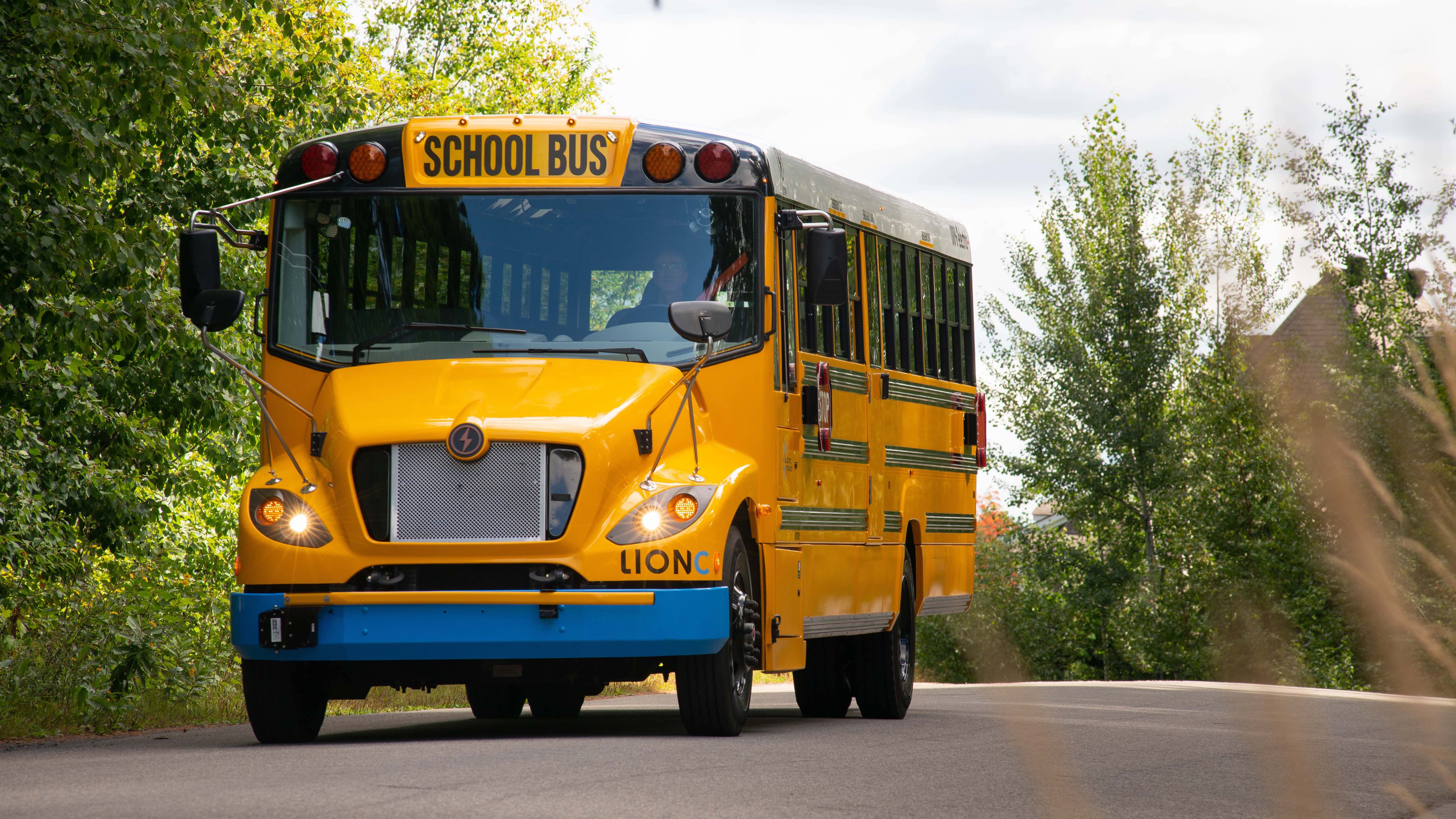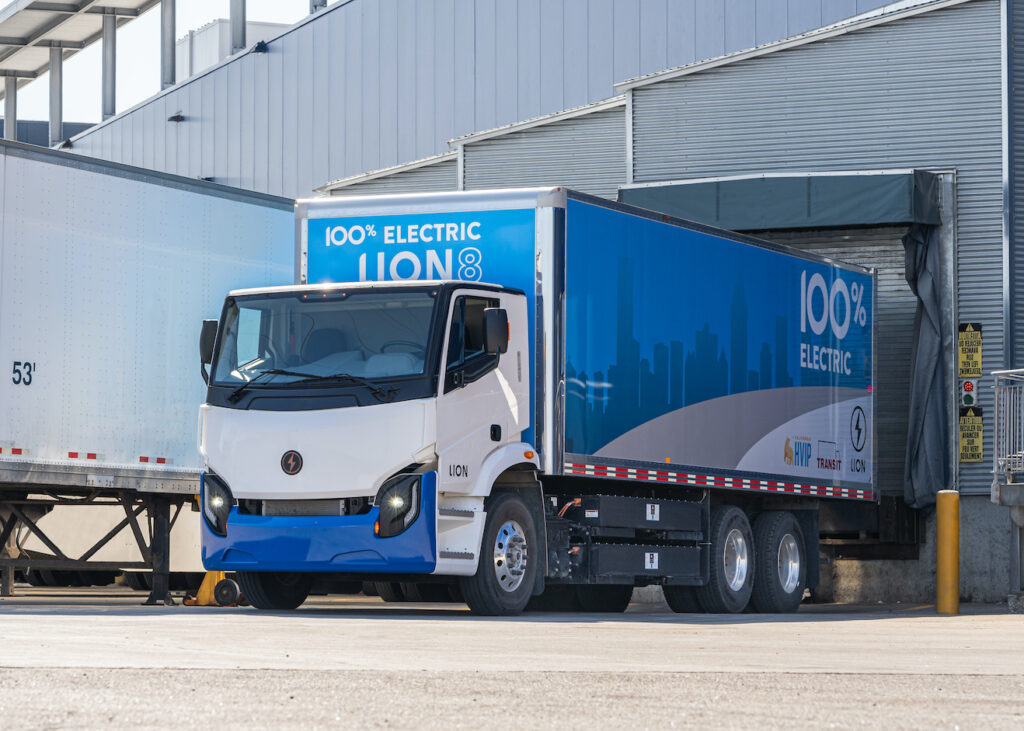When the dirtiest air a child breathes each day is often on their way to school, it’s time for some new math. The answer: A Journey Toward Electrification

Did you know the dirtiest air a child may breathe throughout the day is on their commute to school? Unfortunately, that is often the case here in Canada due to the widespread continued use of diesel school buses. It’s a problem that Quebec’s Lion Electric identified over a decade ago and set out to solve. There is, after all, always another way.
Lion Electric identified school buses as a prime candidate for electrification partly due to their duty cycle. The buses travel relatively short distances with a lot of stop-and-go, leading to poor fuel economy and significant wear-and-tear. The buses also have the added benefit of being available to be plugged in for overnight charging. The average school bus route is less than 50 km, with over 99% of routes being under 130 km. Even so, Lion buses have a range of up to 250 km. Buses can also be charged mid-day while not on the road as needed. It’s a perfect match for electrification and a sector transition that has been taking place since 2016.
Today, thousands of children are being shuttled to and from school in quiet, emissions-free all-electric buses, and Canada is the leader in this shift. For example, Quebec recently implemented one of the most ambitious school bus replacement programs in existence, investing $250 million to electrify 2,600 school buses in the province over the next three years, to replace 65% of the fleet by 2030. Over the next three years, this move is predicted to eliminate 800,000 tonnes of greenhouse gases – and this is just one small sliver of the transportation landscape.
The school bus market is just one small example of a much larger shift – zero-emission transportation is quickly shaping the future of how we get around, and the health of our communities.
Zero-emission technology is here today at scale in heavy-duty vehicles, and they are about to become much more widespread. It would be cliche to say we’re just getting started because we are not – heavy-duty electric buses and trucks have been silently transporting goods and passengers through our cities for several years now. But it is fair to say it is still young – when Lion decided to go electric over a decade ago, the Tesla Model S was not even yet released. It’s hard to believe now, but in 2011, less than 1,000 electric cars were sold in Canada.

So while the industry may be considered young compared to the long history of internal combustion vehicles, the market is definitely ready. With hundreds of governments, municipalities, cities and corporate entities around the world committing to decarbonization efforts in the coming years, it is clear that the 21st century will eventually be the century of a sustainable society. The decarbonization effort is two-fold, with energy production and transportation both becoming cleaner, and more intertwined. Electric vehicles powered by clean, renewable electricity – as many already are – is a cornerstone of our economic future. The green economy is the future economy, creating valuable jobs that will train workers in new skillsets for years to come.
Electric vehicles are on the rise for a wide variety of reasons, the most obvious of which are the health and environmental benefits that they can bring. Eliminating greenhouse gas emissions is critical to fighting climate change while removing fine particulates *such as those emitted from diesel engines) from the air leads to healthier communities, especially for vulnerable groups like children and those with reparatory complications. Every electric school bus put on the road eliminates up to 23 tonnes of greenhouse per year. Heavy-duty trucks drive much higher mileage, and as such, each zero-emission truck can eliminate emissions of up to 100 tonnes of greenhouse gases per year.
Battery prices are steadily declining year-over-year, while energy capacities are simultaneously increasing. It is expected that electric vehicles will meet and surpass price parity with their gasoline and diesel counterparts in less than a decade. But already, the additional economic benefits of EVs have become much more apparent. Simply put, they are much more cost-effective.
When taking the total cost of ownership (TCO) into account, the numbers behind EVs are hard to argue with. Electric vehicles are relatively simple; much less complex than diesel. The average diesel engine will have thousands of moving parts, while an electric motor will have a few dozen. This makes for a high total cost of ownership savings for customers, saving school districts valuable funding that they can put toward education, rather than fleet costs and maintenance. Electric buses have 80% lower energy costs and 60% lower maintenance costs in comparison to diesel. This has the added effect of minimizing downtime for maintenance, increasing utilization efficiency and potentially reducing fleet sizes. Fleet operators stand to save on operations, and more importantly, schools will be able to put funds saved from fleet operations back in classrooms where the investment belongs.
With ambitious carbon neutrality goals approaching over the coming decades and clear environmental, health and economic benefits, electrification will soon become the norm. This means now is the time to lay the appropriate groundwork. With Canada’s ample natural resources – many of which are vital to electrification and battery production – we have an opportunity to create a domestic clean transportation ecosystem that will create thousands of high-quality jobs which will pay dividends into the future.
Lion Electric is doing this today by expanding our Canadian footprint in strategic ways. Our next major step will be bringing our battery production in-house with a state-of-the-art battery production facility for which construction is underway now. When finished, our battery manufacturing facility and innovation center, located at Montreal-Mirabel International Airport, will give Lion the capacity to produce five-gigawatt hours’ worth of battery packs annually, or enough to electrify 14,000 heavy-duty electric vehicles. Lion’s new facility will be an essential link in a specialized supply chain critical to electrifying transportation, helping to create a larger zero-emission technology ecosystem in the region and fostering a world-class talent base. Lion hopes that other leaders in electrification will continue to locate themselves in the area and in Canada, growing the local supply chain with the added benefit of decreasing vehicle costs and creating a world-class talent pool that others will turn to in their journey toward electrification.

















